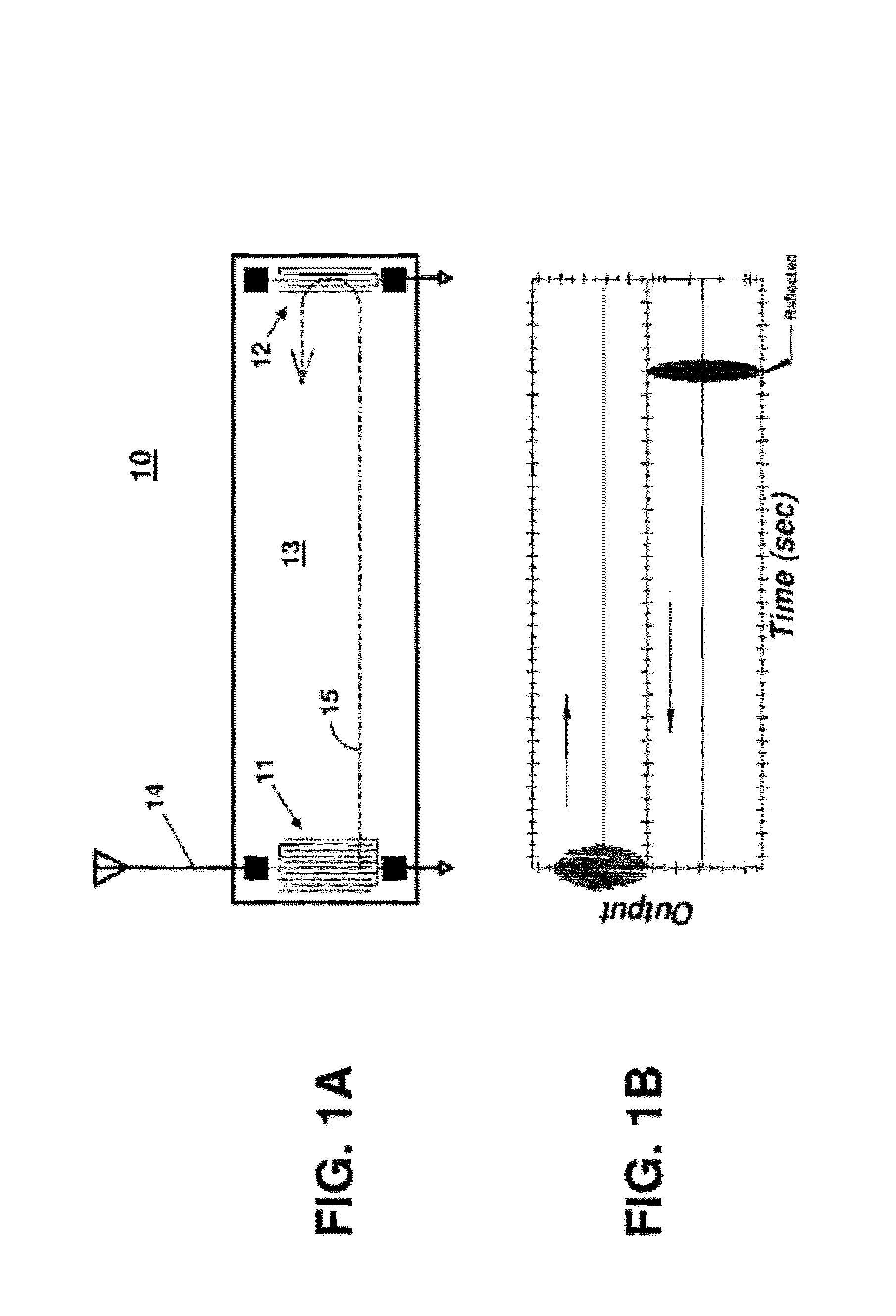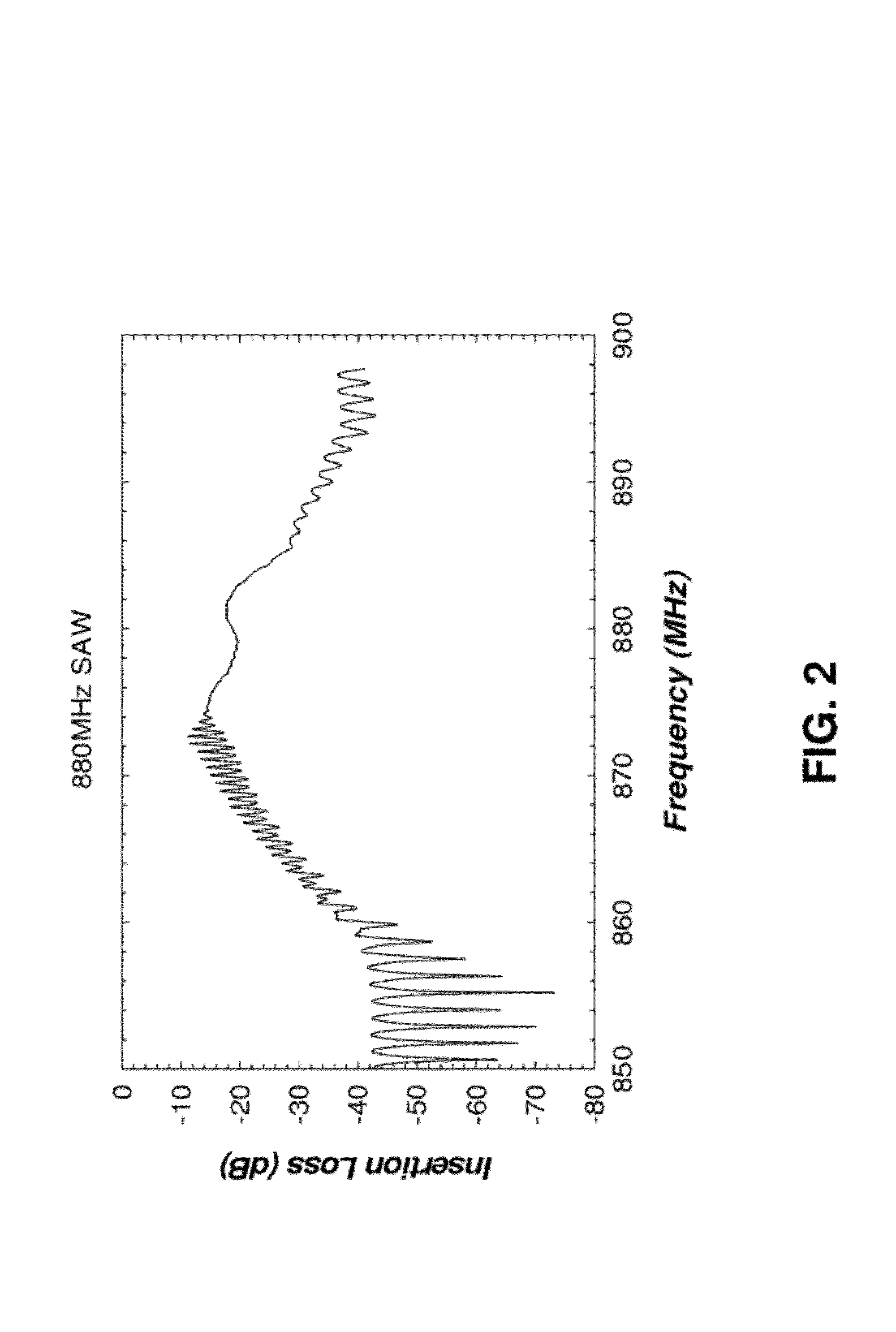Wireless passive temperature sensor
a passive temperature sensor and wireless technology, applied in the field of thermodynamic measurement, can solve the problems of increasing the fabrication cost during dicing and packaging, affecting the accuracy of sensing measurements, so as to eliminate licensing problems
- Summary
- Abstract
- Description
- Claims
- Application Information
AI Technical Summary
Benefits of technology
Problems solved by technology
Method used
Image
Examples
Embodiment Construction
[0023]The wireless passive temperature sensor of the present invention is based on the change in minimum insertion loss of a SAW delay line that allows for large arrays of self-identifying sensors to be pre-positioned for thermal measurement of a structure. The sensors do not require batteries that add unacceptable mass to the structure or wires to retrieve the data, enabling remote sensing. These sensors have a very linear response over a range of less than −60° C. to greater than 190° C. and allow wireless measurements that eliminate the mechanical and thermal disturbance that occur for hard-wired systems. Variation of the SAW characteristic delay and center frequency allow the manufacture of inexpensive, robust, self-identifying sensor element arrays that can be read using a single antenna and data acquisition system. Therefore, a measurement method can use an array of these SAW-based sensors and passive RF to measure the spatial temperature profile of a structural body, such as ...
PUM
| Property | Measurement | Unit |
|---|---|---|
| frequencies | aaaaa | aaaaa |
| temperature | aaaaa | aaaaa |
| temperature | aaaaa | aaaaa |
Abstract
Description
Claims
Application Information
 Login to View More
Login to View More - Generate Ideas
- Intellectual Property
- Life Sciences
- Materials
- Tech Scout
- Unparalleled Data Quality
- Higher Quality Content
- 60% Fewer Hallucinations
Browse by: Latest US Patents, China's latest patents, Technical Efficacy Thesaurus, Application Domain, Technology Topic, Popular Technical Reports.
© 2025 PatSnap. All rights reserved.Legal|Privacy policy|Modern Slavery Act Transparency Statement|Sitemap|About US| Contact US: help@patsnap.com



